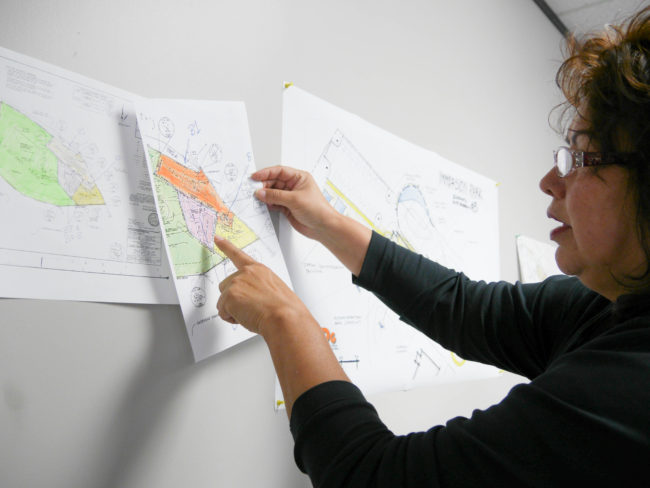The Central Council of Tlingit and Haida Indian Tribes of Alaska has a new target date for opening its cultural immersion park at the old Thane Ore House.

Last year, Central Council officials had hoped it would open this summer. Now, they’re shooting for 2018, after the Juneau Assembly approved a 1.2-acre land lease making it possible Monday evening.
Myrna Gardner is spearheading the Tlingit and Haida Immersion Park project.
She said the Central Council wants to put Juneau’s Native culture at the forefront when cruise passengers visit — literally. The cruise ships must pass the nearly 3-acre waterfront site before they arrive in port.
“When they come to Juneau, you have gifts shops and you have art galleries,” she said. “We want to tie the living culture effect of who we are, with it.”
Gardner said that the park will include classes on totem pole and canoe carving, as well as basic language skills. She said it’s important to remember that Southeast Alaska Native cultures are living cultures.
There will also be a restaurant, gift shop and showcases for Alaska Native artists and dance performances.
“When you think about places you’ve gone or traveled, and you read about the history of people and they talk about them in the past tense, our people have been here for 10,000 years,” Gardner said. “However, today we want people to know that we’re still here and you see it and you get to talk to people in other communities.”
Plans for the park are constantly changing.
Over time, Gardner said they plan to line the road up to the property with totem poles from each of the Southeast tribes. The park will use the two large buildings on the property for cultural activities.
“Our plan is to have a huge Haida style longhouse cover it that shows the Haida heritage side,” she said. This side, we’re going to put a façade of Tlingit longhouses in front of it, so you almost get the image you’re walking through a village.”
Gardner said the estimated $3 million park – plans have expanded since it was pitched as a $1.3 million park last year — will be paid for using a collection of federal grants and Central Council funds. She said while the focus is on culture, the park is intended to create jobs and be a revenue source for the Central Council.
“This is about workforce development and job creation,” Gardner said. “We understand that as a business, as a tribe and as a government, we see from the federal state, especially the state, the budget cuts, and the need for creating jobs and employment within our community.”
The lease terms say the city will be also eventually be paid a $1 per park customer.
If the buildings need to be rebuilt, Gardner said then the park could open in 2018.




